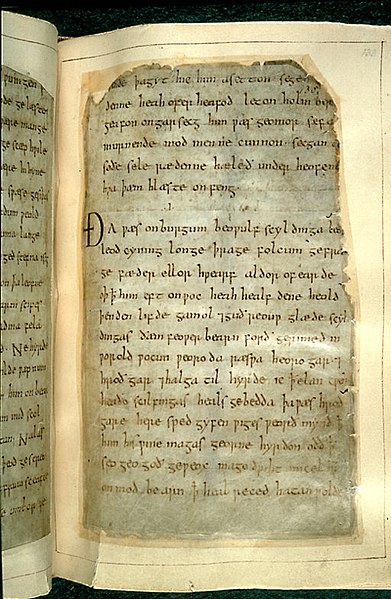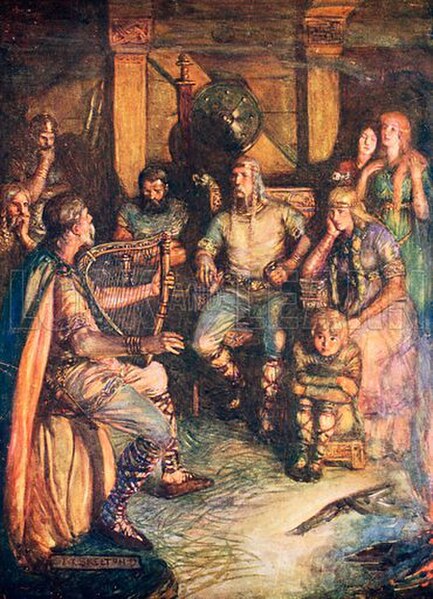The Old English poem Judith describes the beheading of Assyrian general Holofernes by Israelite Judith of Bethulia. It is found in the same manuscript as the heroic poem Beowulf, the Nowell Codex, dated ca. 975–1025. The Old English poem is one of many retellings of the Holofernes–Judith tale as it was found in the Book of Judith, still present in the Catholic and Orthodox Christian Bibles. The other extant version is by Ælfric of Eynsham, late 10th-century Anglo-Saxon abbot and writer; his version is a homily of the tale.
A medieval illustration of Judith and Holophernes
Beowulf is an Old English epic poem in the tradition of Germanic heroic legend consisting of 3,182 alliterative lines. It is one of the most important and most often translated works of Old English literature. The date of composition is a matter of contention among scholars; the only certain dating is for the manuscript, which was produced between 975 and 1025 AD. Scholars call the anonymous author the "Beowulf poet".
The story is set in pagan Scandinavia in the 6th century. Beowulf, a hero of the Geats, comes to the aid of Hrothgar, the king of the Danes, whose mead hall Heorot has been under attack by the monster Grendel for twelve years. After Beowulf slays him, Grendel's mother takes revenge and is in turn defeated. Victorious, Beowulf goes home to Geatland and becomes king of the Geats. Fifty years later, Beowulf defeats a dragon, but is mortally wounded in the battle. After his death, his attendants cremate his body and erect a barrow on a headland in his memory.

First page of Beowulf in Cotton Vitellius A. xv. Beginning: HWÆT. WE GARDE / na in geardagum, þeodcyninga / þrym gefrunon... (Translation: What! [=Listen!] We of Spear-Da/nes, in days gone by, of kings / the glory have heard...)
Remounted page, British Library Cotton Vitellius A.XV
The traditional view is that Beowulf was composed for performance, chanted by a scop (left) to string accompaniment, but modern scholars have suggested its origin as a piece of written literature borrowed from oral traditions. Illustration by J. R. Skelton, c. 1910




